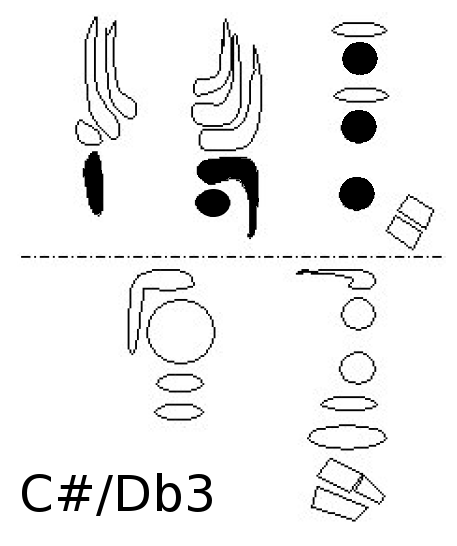
Tenth Bassoon Lesson, Part 1
Tenth Bassoon Lesson, Part 1. Comments on the Ten Lessons. Playing C3/Db3. By
Terry B. Ewell. BDP#201. www.2reed.net/bdp.
<Intro
Music: “Home Sweet Home” from A Tune a Day,
lesson 29 number 6.>
Well, this is lesson 10 and we
are coming to a conclusion in this series. Let me just say a few brief points
before we go onto the lesson material. These ten lessons should not be viewed as
a rigid mandate. Rather, I have put in order the sequence of pedagogical ideas
that I think are best timed for your progress as a student. These concepts I
present in the ten lessons are foundational, absolutely vital to good bassoon
performance technique. I hope that you seriously consider them and work on them
daily. These are so important as principles that I often repeat them with my
college students. When I play, I think about these principles as well to coach
myself into being a better performer.
http://www.2reed.net/EwellArticles/BeginningBassoonist_DR23_2.pdf
When I wrote the article
“Teaching the Beginning Bassoonist” in 2000, I incorrectly identified the
Weissenborn Bassoon-School as Opus 8
number 1. Apparently there is no opus number for this work. The Opus 8 number 1
is a different collection of studies. The edition of the
Bassoon-School that I use is published by Rob. Forberg, distributed
by G. F. Peters Corporation.
As you progress in your studies
you may need to know additional fingerings. Please see aware that I supply for
free standard fingering on the bassoon on 2reed.net. You may download and print
it out this pdf.
http://www.2reed.net/EwellArticles/BsnFingerings.pdf
Now let’s move to the lesson 10
materials. In a prior video I introduced the difficult fingering Eb3. In this
lesson I will have another difficult fingering--C#3or Db3.

I recommend to you again the
website by Professor Kristen Wolf Jensen. She has videos on playing C#3 that are
excellent and can be companions to what I give in this video.
http://www.musicandthebassoon.org/
In the English language when we
say that someone is “all thumbs” that is usually a comment on how clumsy they
are with their hands. However, on the bassoon the thumb must be thee most agile
member of your fingers. Particularly the left thumb has incredible things that
it needs to do. You have already learned about the flicking that the left thumb
needs to do. Now you will learn about what the left thumb has to do with the C#
key.
To produce C#3 the left hand
thumb must depress three keys. Often the music moves step wise to C#3 so you
must also learn to roll the thumb to open the correct keys. For example, let’s
take a look at the Weissenborn
Bassoon-School on p. 14.

Notice how I keep the whisper key
depressed. I don’t lift it in the first measure. Instead I roll my thumb back
and forth. Similarly in measure 3 I don’t lift the thumb. Here it is again.
This will take a good deal of
practice to master this technique. But it is absolutely essential if you are
going to play smoothly to and from C#3.
Copyright (c) 2016 By Terry B. Ewell. All rights reserved.